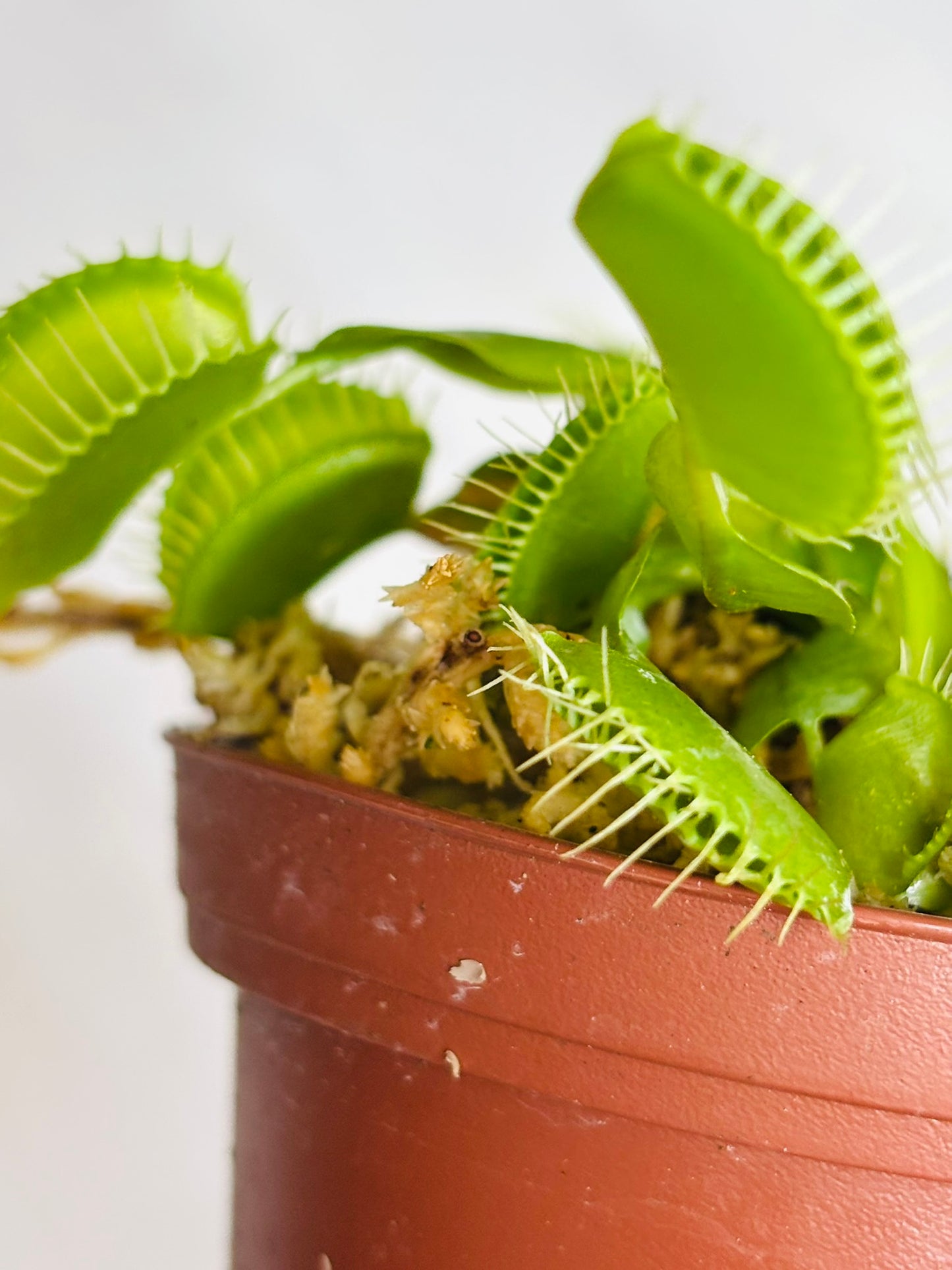SoCal Soul Plants & Gifts
Venus Fly Trap 3"
Venus Fly Trap 3"
Couldn't load pickup availability
Light:
• Venus flytraps need at least 4-6 hours of direct sunlight daily to maintain their vibrant colors and function properly.
• If grown indoors, place the plant near a bright, sunny window (south-facing is ideal) or use a grow light for 12-16 hours a day.
Watering:
• Venus flytraps are very sensitive to water quality. Use only distilled water, rainwater, or reverse osmosis water. Tap water contains minerals that can harm the plant.
• Keep the soil consistently moist but not waterlogged. The best method is to place the pot in a shallow dish of water, allowing the plant to absorb moisture from the bottom.
• Never let the soil dry out, especially during the growing season (spring to summer).
Soil:
• Use a specialized soil mix for carnivorous plants, which typically consists of sphagnum peat moss and perlite or sand. Avoid potting soil, compost, or any nutrient-rich soils, as Venus flytraps prefer nutrient-poor, acidic soil.
• The soil should be well-draining, but able to retain moisture.
Humidity:
• Venus flytraps do well in moderate to high humidity but can adapt to lower indoor humidity if they have adequate water.
• If your environment is very dry, consider placing the plant in a terrarium to maintain humidity levels.
Temperature:
• Venus flytraps prefer temperatures between 70°F and 95°F during the growing season.
• During winter dormancy, they can tolerate temperatures as low as 32°F to 50°F
Feeding:
• Do not feed them human food (meat, cheese, etc.), as this can rot the traps.
• If the plant catches an insect, it will close the trap and digest the insect over the course of a week or two before reopening.
Dormancy:
• Venus flytraps need a winter dormancy period of 3-4 months. This typically occurs from late fall to early spring.
• During dormancy, reduce watering (but don’t let the soil dry out completely), and place the plant in a cooler environment (about 32°F to 50°F).
• The traps may die back and the plant will look unhealthy, but this is normal. After dormancy, new growth will emerge.
Repotting:
• Repot your Venus flytrap every 1-2 years in fresh carnivorous plant soil. This is best done in the early spring before the plant comes out of dormancy.
Pests & Diseases:
• Venus flytraps are relatively pest-resistant, but they can occasionally suffer from aphids, spider mites, or fungal infections.
• Treat pests with insecticidal soap, and ensure good air circulation to prevent mold or fungal issues. Avoid using chemical pesticides, as they can harm the plant.
Extra Tips:
• Avoid triggering the traps unnecessarily. Each trap can only close a limited number of times (3-5) before it dies off, so don’t poke them for fun.
• Don’t fertilize your Venus flytrap. It gets its nutrients from the insects it catches.
• Patience: Venus flytraps are slow growers, and it can take time to see noticeable growth or trap development.
Care Instructions
Care Instructions
Delivery only available in IL & MO
Delivery only available in IL & MO
Currently, shipping is only available to Illinois and Missouri addresses.
In-Store Pick Up
In-Store Pick Up
Free in-store pick-up is available during store hours. Orders are ready to go within 24-48 hours after your order is placed.
Additional Info
Additional Info
Each plant is unique; size, coloring, and shape fluctuate so your plant may be slightly different than the one pictured. However, you'll always receive a happy healthy plant hand-picked, and I won't give customers anything I wouldn't take home myself!
Share








